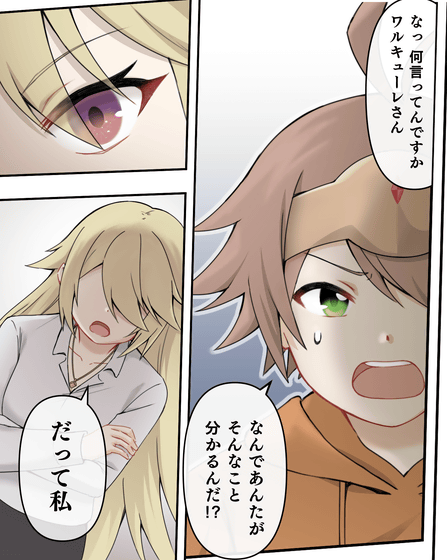6 tips for creating a plot twist in your story

Stories that have a 'twist' at the turning point or climax of the story that overturns the reader's expectations and imagination up to that point are surprising and leave a strong impression. Journalist and author Jesse Garcia explains six points to keep in mind to create a fascinating twist.
6 Tips For Pulling Off a Really Good Plot Twist ‹ CrimeReads

Revealing something in the middle of a story, such as 'It was actually ____,' or overturning a previous impression by saying 'It wasn't ____ but ____,' can shock the reader and entertain them. However, if there are no clues at all that lead to the revelation, or conversely, if the clues are too obvious that the plot twist is obvious, the reader may become frustrated and lose interest.
Garcia suggests six points about what kind of idea is suitable for a truly good plot twist and what elements you should pay attention to.
1. Unreliable narrator
The 'unreliable narrator' is a narrative technique that American literary critic Wayne Booth introduced in his 1961 book ' The Rhetoric of Fiction ,' arguing that 'the first-person narrator is an unreliable narrator.' Stories told in the third person point of view are basically from a God's perspective, so there is no lying or misunderstanding, but the first-person point of view is always told from the protagonist's point of view, so it is easy to create a structure in which the protagonist intentionally conceals information or emotions or misunderstands what he sees, and then later reveals the truth.

2. A strong backstory
For example, if an unreliable narrator sets up a plot twist in which the protagonist is looking forward to getting together with his friends on the weekend, but it's not to have fun, but to kill them, simply hiding the information and revealing it as it actually was will make it seem cheap, Garcia points out. By giving the reader a good understanding of the protagonist's personality, emotions, and past experiences before the plot twist, you can make the truth more convincing when it is revealed.
3. Providing clues
If a person intends to commit a crime, he or she will prepare for it. However, if you suddenly take out a knife or poison from your bag, it will just unleash your madness. Therefore, it is ideal to present clues that you can later realize are true, such as preparing a knife for camping or not putting in eye drops even though your eyes are itchy because you put poison in the eye drop container, without making them obvious.
4. How to plant clues
Garcia suggests two techniques for clearly showing clues without making them obvious. The first is to sneak them into a long explanatory text so that the reader can just glimpse them. In the following example, Garcia uses a 'treasure chest' hidden in the fish tank, which will later have an important meaning, but is difficult to notice among the many other objects.
It made me smile to see how Ken had decorated the tank with so many thoughtful touches: seaweed and plants, colorful coral, a tiny jewel-studded treasure chest, miniature scuba diving equipment, and a sunken ship figure big enough for small fish to get in and out of.
The second technique proposed by Garcia is to have an event that diverts the reader's attention right after the clue. In the following passage, a scene that seems odd, 'They prepared two bottles of eye drops even though it was only an overnight trip,' is immediately followed by an event that cuts right into the scene, making the reader forget about the strangeness and focus on the next development.
I was packing for an overnight stay, with one big bottle of eye drops in my main pocket and one in my small pocket, when I was startled by the sharp sound of the doorbell. I peeked outside and saw that it was my friend, an hour early. How and why did he get here when he wasn't supposed to be here yet? Something was wrong.
5. Make the plot twist believable
As for plot twists where the truth is revealed, unrealistic plot twists such as 'It was actually a picture book world' or 'It was actually aliens who solved all the problems with their supernatural powers' can have a big impact on the reader. However, even if clues that seem like that are presented, they may be so absurd that the reader may dislike the story and never want to read another book by the same author. According to Garcia, it is important for a work that later reveals an absurd truth to be clearly set in the genre.

by 'The Part-Time Life of a Hero and a Corporate Slave' Episode 8 'The Hero, the Corporate Slave, and the Mysteries of the World'
6. Other small tips
It is necessary to set up clues to create a plot twist, but if you do not collect all the clues scattered for the plot twist, you will end up leaving the reader dissatisfied and wondering, 'What was that description that was not mentioned?' It is important to be careful that there are no loose ends when the story is finally resolved.
Also, if all the endings and clues for them are solidified at the time of plot conception, you can build it exactly that way, but that's not always the case. There are some points that you only realize as you write, such as realizing that a character who wasn't important at first can be involved in an important scene, or planting new and interesting clues along the way. 'Constructing a plot twist is like planning a giant party game or escape room for your readers, and it's a lot of fun. I recommend not being afraid to change the trajectory of your initial concept as you write, and expanding it freely,' Garcia said.
Related Posts:
in Note, Posted by log1e_dh







